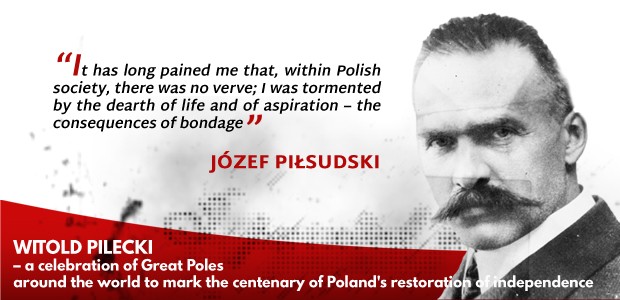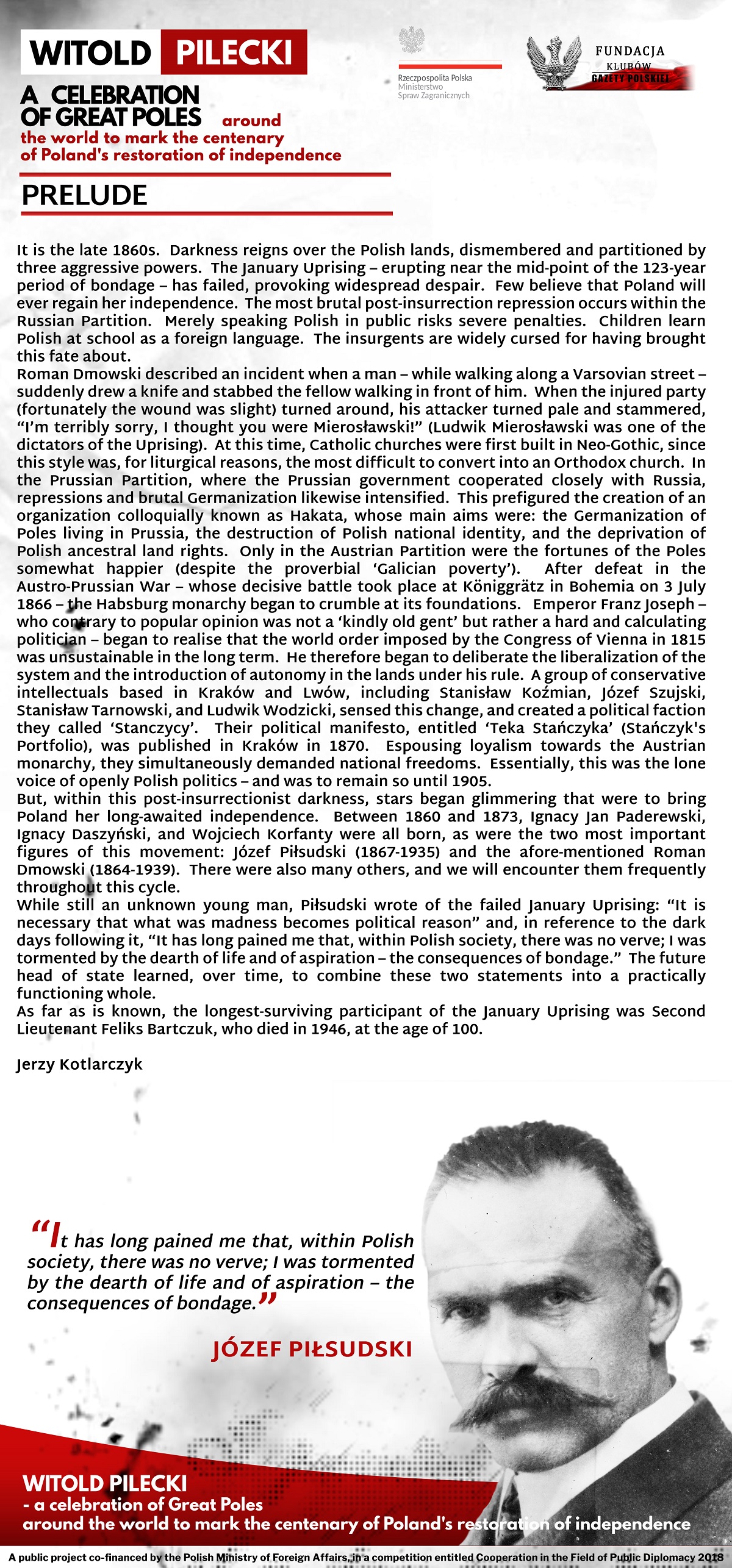Prelude
It is the late 1860s. Darkness reigns over the Polish lands, dismembered and partitioned by three aggressive powers. The January Uprising – erupting near the mid-point of the 123-year period of bondage – has failed, provoking widespread despair. Few believe that Poland will ever regain her independence. The most brutal post-insurrection repression occurs within the Russian Partition. Merely speaking Polish in public risks severe penalties. Children learn Polish at school as a foreign language. The insurgents are widely cursed for having brought this fate about.
Roman Dmowski described an incident when a man – while walking along a Varsovian street – suddenly drew a knife and stabbed the fellow walking in front of him. When the injured party (fortunately the wound was slight) turned around, his attacker turned pale and stammered, “I’m terribly sorry, I thought you were Mierosławski!” (Ludwik Mierosławski was one of the dictators of the Uprising). At this time, Catholic churches were first built in Neo-Gothic, since this style was, for liturgical reasons, the most difficult to convert into an Orthodox church. In the Prussian Partition, where the Prussian government cooperated closely with Russia, repressions and brutal Germanization likewise intensified. This prefigured the creation of an organization colloquially known as Hakata, whose main aims were: the Germanization of Poles living in Prussia, the destruction of Polish national identity, and the deprivation of Polish ancestral land rights. Only in the Austrian Partition were the fortunes of the Poles somewhat happier (despite the proverbial ‘Galician poverty’). After defeat in the Austro-Prussian War – whose decisive battle took place at Königgrätz in Bohemia on 3 July 1866 – the Habsburg monarchy began to crumble at its foundations. Emperor Franz Joseph – who contrary to popular opinion was not a ‘kindly old gent’ but rather a hard and calculating politician – began to realise that the world order imposed by the Congress of Vienna in 1815 was unsustainable in the long term. He therefore began to deliberate the liberalization of the system and the introduction of autonomy in the lands under his rule. A group of conservative intellectuals based in Kraków and Lwów, including Stanisław Koźmian, Józef Szujski, Stanisław Tarnowski, and Ludwik Wodzicki, sensed this change, and created a political faction they called ‘Stanczycy’. Their political manifesto, entitled ‘Teka Stańczyka’ (Stańczyk’s Portfolio), was published in Kraków in 1870. Espousing loyalism towards the Austrian monarchy, they simultaneously demanded national freedoms. Essentially, this was the lone voice of openly Polish politics – and was to remain so until 1905.
But, within this post-insurrectionist darkness, stars began glimmering that were to bring Poland her long-awaited independence. Between 1860 and 1873, Ignacy Jan Paderewski, Ignacy Daszyński, and Wojciech Korfanty were all born, as were the two most important figures of this movement: Józef Piłsudski (1867-1935) and the afore-mentioned Roman Dmowski (1864-1939). There were also many others, and we will encounter them frequently throughout this cycle.
While still an unknown young man, Piłsudski wrote of the failed January Uprising: “It is necessary that what was madness becomes political reason” and, in reference to the dark days following it, “It has long pained me that, within Polish society, there was no verve; I was tormented by the dearth of life and of aspiration – the consequences of bondage.” The future head of state learned, over time, to combine these two statements into a practically functioning whole.
As far as is known, the longest-surviving participant of the January Uprising was Second Lieutenant Feliks Bartczuk, who died in 1946, at the age of 100.
Jerzy Kotlarczyk
- Józef Piłsudski Fotografia ze zbiorów Narodowego Archiwum Cyfrowego
- Józef Piłsudski Fotografia ze zbiorów Narodowego Archiwum Cyfrowego
- Tablica pamiątkowa poświęcona marszałkowi Józefowi Piłsudskiemu umieszczono fragment przemówienia, jakie wygłosił podczas swojej wizyty w krakowskim magistracie w 1919 roku. / Urząd Miasta w Krakowie (foto. Fundacja Klubów „GP”)
- Tablica pamiątkowa poświęcona marszałkowi Józefowi Piłsudskiemu umieszczono fragment przemówienia, jakie wygłosił podczas swojej wizyty w krakowskim magistracie w 1919 roku. / Urząd Miasta w Krakowie (foto. Fundacja Klubów „GP”)
- Pomnik poświęcony zrywom niepodległościowym w Gminie Wielgomłyny (foto. Fundacja Klubów „GP”)
- Pomnik poświęcony zrywom niepodległościowym w Gminie Wielgomłyny (foto. Fundacja Klubów „GP”)
- Popiersie Wojciecha Korfantego w Parku Jordana w Krakowie (Foto. Fundacja Klubów „Gazety Polskiej”)
- Popiersie Wojciecha Korfantego w Parku Jordana w Krakowie (Foto. Fundacja Klubów „Gazety Polskiej”)
- Popiersie Ignacego Daszyńskiegow Parku Jordana w Krakowie (Foto. Fundacja Klubów „Gazety Polskiej”)
- Popiersie Ignacego Daszyńskiegow Parku Jordana w Krakowie (Foto. Fundacja Klubów „Gazety Polskiej”)












